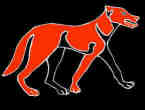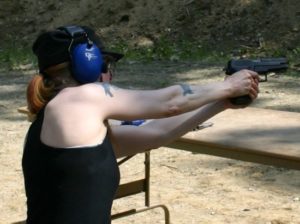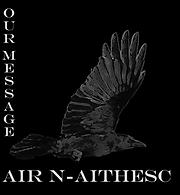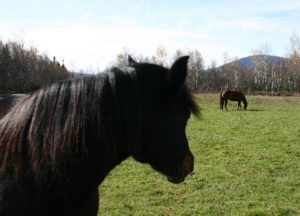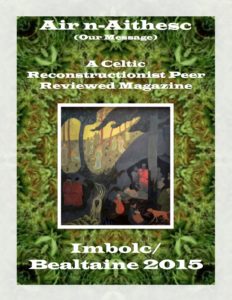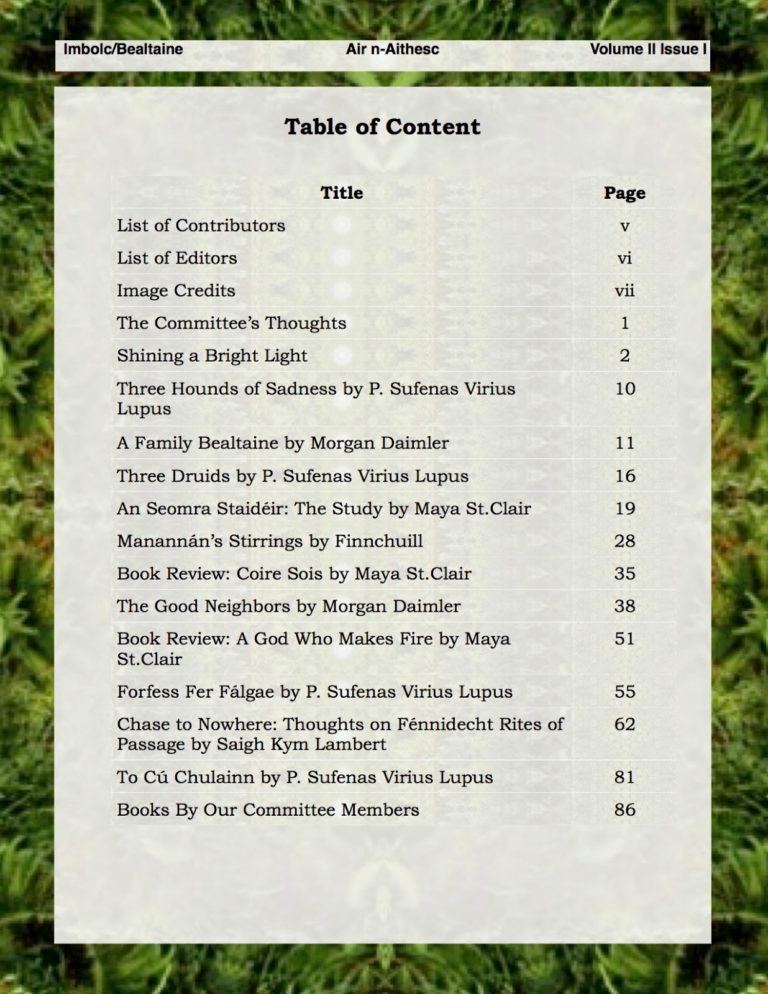If you find this article helpful, please remember this was work to put together and I have animals to feed and vet
Yeah, me either, kid
When it comes to the perceptions of the warrior path and what it means to be on it, there are quite a few misconceptions due to modern uses of the word “warrior.” Some have come up, again, since my last post. One is that if we define “warrior” as someone who fights, including physically, it must require being a fully able-bodied, superior even, “soldier” type.
This sometimes leads people to think that I match such a description…something much easier to do via the internet than it is in person, although I have apparently confused a few in real life, too. So I have often heard things along the lines of, “I’m not cut out to be a warrior, like you are.” Usually some rumor is tagged onto this about my past. I’ve had people think I am ex-military. Had one woman spend a druid gathering telling everyone I had been convicted of a violent felony. I’ve certainly been accused of being athletic. And I’m really not. Which makes this all hard to write and is really pushing my imposter syndrome buttons. Even if I know that it shouldn’t, because it is a very modern and imperialistic concept of “warrior” that this idea is about. (again, I have page on the warrior path which also discusses such things, but a bit less personal).
The truth is that, while I was a outdoorsy “tomboy” growing up, I was actually a scrawny, clumsy, weak and sickly one. I loved running around in the woods and fields and riding horseback, but wasn’t good at any of it. Although that likely didn’t occur to me when I was little, I was just having fun. However, as I grew up I was made well aware of it.
From the beginning of school, gym class was a constant gauntlet of humiliation. I’m pretty sure the only purpose of the class was to give means for the “teacher,” who at that time was the head coach of all the junior high and high school teams, a way to sort out those who he wanted to prepare for those future teams. The rest of us were to be humiliated and abused, and to be honest, I was always at the bottom…I don’t think there was ever a time when I wasn’t the last picked for sides, unless another loser was also injured or something. I had no coordination. I was weak. I ran slow and was easily out of breath (turns out my lungs are not fully developed, discovered that in my 40s!). I loved riding our horses, but it took a long time to really develop my “seat” and human instruction was no help…I just eventually learned from the horses and ponies (some of which were determined to make it a challenge). I was the last of my peers to learn to ride a bike. I could only really enjoy movement on my own or in the company of animals, around peers or adults it was always a humiliation.
I am sure I did dream of being strong and heroic as a kid, but figured out I’d need to gain superpowers from somewhere to do it. Obviously, a lot of time I wasn’t in the woods I was reading. Including comics. So, yes, perhaps there was a seed of a desire to be a warrior back then…just not a belief in the possibility. I mean, it might be part of the draw of witchcraft in the beginning, as I couldn’t gain physical power…but there were also “weird things” happening that drew me into that and into discovering, via Sybil Leek, that it had apparently had to do with Goddesses, or at least a Goddess, and I had been worshipping Goddess since I was 8 or 9, mostly Artemis as Greek myths were the ones I had access to and I did dwell mostly in the woods.
And I actually was an angry child. Of course I was, I felt constantly vulnerable to… everyone. That I was seen as violent meant that I was also taught that it was something to suppress, never, ever channel. It was viewed as if I had the tools for violence I would be an aggressor, rather than seeing that my tendency towards aggression was a response to feeling utterly helpless when everyone around me was stronger than I was… and that some made sure I knew it. It was the ’60s and while my parents were hardly hippie (being “Greatest Generation” and totally dedicated to being mainstream) the trends of pacifism and non-violence that grew out of the anti-war movement held some sway over the times in general. And I took to the whole hippie aesthetic and peacenik ways as a kid and held onto to them. Growing up different (autism and ADHD weren’t diagnosed in girls at all when I was a child, my learning disabilities were not obvious enough to be diagnosed as anything, which probably would have led less to getting help and more to being labeled and shunted aside, anyway) in a very conservative small town it was a way to define my difference in a way I saw as positive.
Anyway, our high school didn’t have gym class, so we losers were now free of that torturous requirement. Perhaps it was a desire to at least try to get stronger and build endurance, seeing no magical or scientific intervention was at hand, I did get into the ’70s fitness craze despite my gym-trauma. I had actually started yoga, sort of pushed a bit as a way of managing anger, through books, in junior high. But now I found that running (or “jogging” as it was called) was still fun, as long as I was alone with my dog. I tried aerobics, but found it boring. Weight lifting for women was sort of a joke at that point I got a set of 3.3 lb “Princess Smartbells?!” and, obviously, it did so little of anything that I kept losing interest.
My relationship with fitness remained an on-again/off-again thing. I did get a little instruction on weight training from a boyfriend and moved to 10 lb. dumbbells! Eventually I added a pair of 15 lb. But I never stuck with it, often found other things to do instead. I was a bit more consistent through the years with running and cycling, although sometime I just walked. Every so often, I’d try Yoga again. I took dance lessons for awhile, but my class got cancelled and I never found another teacher and just …drifted off.
I was a photographer, photojournalist, pretty much my focus since I was 15 or 16. It put me in an observer category in all things, but I think I thought I’d change the world with my pictures. I was working in the darkroom and stringing for a paper, but burned out suddenly at about 22 or 23 (what I now know was likely an autistic burn out….but I didn’t know I was autistic so…..). For years I couldn’t stand the idea of taking another photo. I became involved in political groups, something I couldn’t do as a photojournalist. Paganism/Witchcraft was a constant.
Oh, still totally into the hippie/Boho thing. While it wasn’t exactly popular, it was at least common in the political groups I was involved in, which did have some “appropriate age” hippies as well as we young wannabees. There were also others who were interested in Witchcraft and Goddess worship, a lot had problem with the word “Pagan” though. And few were overly serious. I was looking for Wiccan training at the time, but the super conservative Wiccans I was meeting…that wasn’t a fit. Drove around in my 1975 VW Bus, listening to music mostly from the ’70s, with my dog, Gabe, and various friends and lovers…for as long as the damn bus ran (with one engine replacement). yeah…I had a fucking Bus, even… seriously, living the best ’70s witchy life in the ‘mid-80s. ;p
Eventually, a friend who I met at the open house of a hokey “Witch school,” and was also not impressed by it, offered to introduce me to the coven he had since joined. Another friend of ours, met at the same event, likewise unimpressed, and fellow hippie wannabe, took me aside and warned me that the group was reputedly “dark” and “violent”… apparently, mostly because the HPS ran a “warrior” political group, as well. But I was seeking training and, actually, the coven was a British Traditional Wiccan off-shoot, the political group was hardly what I’d call “warrior” now and really in line with groups I was in already except being run by BTW Wiccans.
I joined both groups. And, well, this could get long so let’s just say things were going along, but not without the dramas that come with any group I suppose, and then the High Priestess died about 6 months after I joined. Both groups ended up in total chaos and…yeah…I tried staying with both…the political group had a major and hostile breakup and I was among those who left. The coven, now a grove with no 3rd degree woman to run it, went through several attempts to rebuild. I was supposed to be part of that….but….
Um, yeah, I was initiated about a year after her death, so six months later than originally planned, through our HPS’s HPS via our HPS’s HP consort, who was also my partner. I started training with this HPS for second degree. But I was grabbed by the hair by the Morrígan and told I was supposed to be one of Her warriors. (Okay, maybe my friend had been on to something with her warning…ooops)
This is post is already way too long and probably boring the shit out of you already. So I’m going to get into the spiritual training issues that came up sometime later…I’ll stick to the physical side for right now
So, yeah, it was clear She meant something very different from just political action. Or some “inner battle” stuff. Or “shadow work.” Or that She was there to protect me. Or any of that. It was fucking clear. Whether I liked it or not.
I think I was running at the time, maybe lifting a bit. My partner had an on-again/off-again relationship with exercise, as well. Honestly, I can’t say if I was on or off at the time. I do know that we were taking a Tai Chi class, the only sort of martial art I had ever done at that point, but I was also returning to college and moving back north (I was off-campus, but needed to save money) so that was even just ended or ending for me. So I was totally, “whoa! wrong woman here, I am not cut out for that.”
But She was insistent. So…
This is when I got real serious about working out, no more on-again/off-again…except when physically I’d be forced off. I started to read what I could find about weight training, trying to sort out the bullshit fed to women to not train like men. Most of what I found was bodybuilding focused and I tended to follow training “designed for men”…. because so much “fitness” shit was about training women to be smaller and weaker. Okay, so much still is, but at least there is more that is refuting that. I got a barbell/dumbbell set, a bench. I ran. A lot. After moving back home, I found a dojo about an hour away. I trained. I trained hard. When I could. (just an aside as I mention it as a “obviously this shows I’m not a warrior” in regards to how I used to dress, I will note my aesthetic changed after this, especially as most of my favorite clothing got stolen from my car when I returned from a trip either just before or just after my initiation….but, really, you don’t need to change your look for the path, even if you dress like a hippie ;p )
This is also when I found what I think I had always been looking for in movement, but was too caught up in the “normal” (and often completely bogus and harmful) messages of what fitness was about. Oh, yeah, not so much an aside…fitness shouldn’t be about changing how you look, either! But that is the primary thing that fitness is packaged as, even though it usually doesn’t work and people become frustrated and are then are themselves blamed (by instructors, trainers, doctors, books, videos, family, friends, themselves) for not living up to the false promise they are sold. Even before I realized this, well, fraud, even when I still wanted to look like a bodybuilder (and then Linda Hamilton’s Sarah Connor…who I eventually decided I wanted to to want to be like, in some ways, instead) I realized that the key thing in fitness isn’t any goal, not even of becoming stronger, but of the joy of actually doing it. That’s what I knew as a kid, but was too caught up in society’s messages and, yeah, the trauma of from gym class to remember. Even though I started looking as a teenager.
In movement I found the connection I had instead been seeking through meditation, because all spiritual training I got was “sit and meditate,” “sit and journey,” ….sit. Now certainly some folks can both find a connection in movement and in sitting meditations, but I’m not really one. I can do some deep trance work lying down (never sitting) and still, but it only works if I am able to exercise at the time. If I’ve not moved recently, I can not be still. But the movement itself also became the meditation for me and also allowed me to find my, well, wolf self again. In running I find my canine nature again, which I eventually (something that is actually very evident but missed by many) was the very nature of the ancient warriors. In lifting I could feel my body forging strength to serve Her. In fight training, I danced the Morrígan’s dance. And even before I realized it, I think this is also why when I graduated I became a personal trainer, to share the joy not the awful messages that sometimes drove me out of the industry. Whether a fully realized spiritual path or just because it feels good.
Still, I’d love to say I got super strong, my lungs were fixed and I’m now all some seem to think I am despite starting in my late 20s. Uh, yeah. No. I mean, I am a hella lot stronger. My lungs are still limited but I take up oxygen really well considering. But it’s all compared to where I was, not something that would stand out as particularly athletic or strong. Certainly not fast. I will never be a really fast runner.
But fitness improvement is individual. That’s what the mainstream fitness industry doesn’t want you to know, because it thrives on you “failing” to meet a false promise it sells and then making you pay to try again. And it’s not always consistent, because it can’t be. Not for anyone, because things happen (a lot of people have learned this this year, especially as we learn more about the effects of Long-COVID).
I got strong, but then got sick again and had a long lay off. I got strong again then developed a shoulder injury, was misdiagnosed, tried to get strong but wasn’t getting there, initial issue caused two more secondary injuries, finally got diagnosed/operated on/PT, started getting strong again, got wrist issue on same arm and got set back….now finally starting to get strong (broken ankle at least did not set back this issue…and I’m 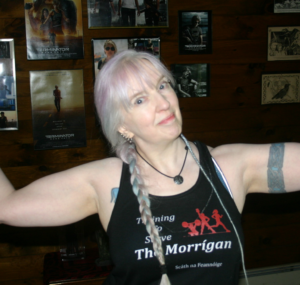 pretty much recovered from that now, too). I’m also questioning some things going on with the other shoulder, which I hope to get looked at before it gets as bad as the other…insurance companies don’t like that though, so we’ll see. I mean, I got sick a few times during the eight years it took to get my shoulder fixed, as well.
pretty much recovered from that now, too). I’m also questioning some things going on with the other shoulder, which I hope to get looked at before it gets as bad as the other…insurance companies don’t like that though, so we’ll see. I mean, I got sick a few times during the eight years it took to get my shoulder fixed, as well.
The facts are that I have chronic physical disabilities, some of which are getting worse as I age…some getting better due to getting treatment. I have extreme anxiety, currently overwhelming social anxiety, and severe bouts of situational depression. Much of this, including many of my physical issues, are due to autism. Although, many, of the mental disabilities, like the social anxiety, are probably far more related to how society treats autistic people, especially undiagnosed women, because we do communicate and respond differently… or, as we’re told our entire lives, “wrong.” Being fit doesn’t change that, sometimes this keeps me from being as fit as I might be. I do know that when I can workout I feel better when I do….and that sometimes the fact I can’t due to something “flaring” makes the issue worse. There are simply times when I just ….can’t…… And…right now I just can’t with talking about this more.
So, and I feel I am repeating myself here but I also feel like it just isn’t getting said enough. Yes, at the heart of the warrior path is the physical. Because harm is often caused physically in one way or another, harm must often be battled physically. By those who can. Sometime with the aid of those who can fight in other ways.
And fighting harm to others who can’t fight back is what a warrior does. This is ultimately a path of service. That’s why “inner battles,” “shadow work” and so forth are never enough if you are claiming the warrior path. They may be things that help you help others, but if they are only for your “personal spiritual development” then they are not about being a warrior. And, I’ve never known the Morrígan much concerned with helping me in such things. Our inner battles are our own, in my experience they are not what She is concerned with.
So physical training is not something I consider one can just choose to not do. That doesn’t mean everyone needs to “go all out” …for some the physical part might be limited, might be interspersed with periods of no physical training due to health reasons. However, there are certainly people that cannot physically train at all, because their bodies just do not allow for it. That’s 100% legit. And that doesn’t mean that they are not on the path if their focus is on building a warrior community, on learning the mind set and the parts that they can do.
Because that’s what we need to build (oh, we can get into how my extreme introvert anti-social nature is not geared to community building, but not even sure I’ll do an upcoming post on that). Not a modern, imperial-style military, but a warband, which was a sub-culture community. This is why the Fíanna do serve well as an example. There is the idea of developing our strengths and overcoming each other‘s weaknesses.
The idea that Cú Chulainn was a big muscular man, rather than a small and rather femininely pretty boy is base on our modern perception of a strong hero, not how he was described (aside from his ríastrad) in the texts. Likewise, images of all the members of Fionn Mac Cumhaill’s fían looking like Conan the Barbarian (whether you are looking at the pulp novels or Arnold Schwarzenegger’s or Jason Momoa’s movies). While Cú Chulainn’s looks simply belied his actual exceptional strength and skills, the warbands consisted of people who excelled at varying skills (although Fionn often is noted as having all these and besting his best).
So CN: some ableist language ahead in noting critique of storytelling and “overcoming disability as a superpower” thing:
The following passage indicates that perhaps disabled warriors were part of Fionn’s Fíanna, but like storytelling tends to still to this day do, it was spun to show that disabled warriors were “wonders” who are the best at the things they are disabled as. This is often referred to by disabled commentators as “supercrip.” (I also want to note that not all of this is about disability, but includes what might be an attempted description of gender fluidity, which is also offering a related “wonder”).
[Finn is speaking: One of the wonders is] a deaf warrior (óclach)
who is in the fían-the poem or song has not been composed
that he has not learned well and committed to memory completely.
Another wonder that is in the fían: a man with a
wooden leg who surpasses all of the fían in running -dog,
horse, and man. Another wonder that is in it: a blind man
who never throws a missing cast day or night. Another wonder
that is in it: my own paramour, who is dead by night and
alive by day; no other paramour that I have ever had, has been
dearer to me. Another wonder that is in it: a warrior (óclach)
who is a woman one year and a man the next; he bears
children when he is a woman, and he sires children when he
is a man. Another wonder of the fían is my spear, the spear
of Fiacha mac Croinghind: if it is thrown with the butt end in
front, it wreaks hurt, injury, and destruction upon the person
or animal against which it is. thrown; when it is cast with the
point first, it does not damage or do destruction to the man
or animal against whom it is thrown. And so these are the
greatest wonders in my fían.
(Maud Joynt ed., Feis Tighe Chonain: Mediaeval and modern Irish series, v. 7, Dublin: The Stationary Office, 1936, lines 449-469, pg. 14; trans. by Joseph Falaky Nagy, The Wisdom of the Outlaw: The Boyhood Deeds of Finn in Gaelic Narrative Tradition, Berkeley: University of California Press, 1985, pg. 51)
While this is, as noted, problematic, it should be considered as a possible hint that disability (and gender fluidity!) did exist in the bands, just that those who wrote the tales, and those who told them in the first place, spun it to be wonderous because making the tales wonderous was kind of the point of the stories. This is still a huge part of story telling, common in comic books and science fiction, with this same spin. On the flip side, both early Irish and modern pop culture stories often use disability as a shortcut to say someone as evil. We can create better stories….and I mean that as we live our own stories as well as in story telling.
As I was starting to get to his point of his post, this article come across my feed and I think it’s a good analysis of way disabled warriors are featured in The Bad Batch (and somewhat in the Star Wars franchise, in general) which includes the idea that disability does disable us from some activities rather than make us “wonders,” but working together creates the over all strength. It truly explains, using this franchise as a model, what I am getting at here. That we don’t have to be “perfect soldiers” in order for us to have strong contributions that enhance what others contribute. Again, CN for ableist terminology, discussions of eugenics, gene manipulation, behavioral analysis, torture….and spoilers for the first season of The Bad Batch: Supercrips, Solidarity, and Crip Families in The Bad Batch Dr. Johnathan Flowers
And that really fits what I’m trying to say here. That this path is built on a wide spectrum of needs and abilities. While the physical fighting part is going to be a thing, because violence is around us and that’s probably going to get worse, it is just a part of it. But the other parts are more than just “inner battles” and personal spiritual work. It has to be about coming together to fight. With various skills. Even when we have various weaknesses. Fighting on various fronts. And I don’t feel we’ve done this, which is the source of my frustration that. And of guilt, because perhaps I should have been doing more.
If we believe the Morrígan is calling us to do something why more people not training to do it? Why are we so not prepared? Because She’s not calling warriors because something is coming in some vaguely distant future…that something is already here!
(Part one of what looks like a series is The Morrígan Calls Warriors, Too….)
If this was helpful to you or you just want to support my writing efforts, please, ![]()
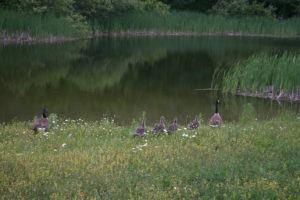 know I have to stop here as someone is probably getting upset and note that I am not saying you have to be….I’m trying to remind folks it is an option. AND that if you are going to talk about the warrior path, maybe do learn something about the warrior path because otherwise you sound like a damn willfully ignorant fool, and, yes, go off and get steamed about that if you don’t want to maybe rethink anything, but I’m not going to spend time arguing about it)
know I have to stop here as someone is probably getting upset and note that I am not saying you have to be….I’m trying to remind folks it is an option. AND that if you are going to talk about the warrior path, maybe do learn something about the warrior path because otherwise you sound like a damn willfully ignorant fool, and, yes, go off and get steamed about that if you don’t want to maybe rethink anything, but I’m not going to spend time arguing about it)